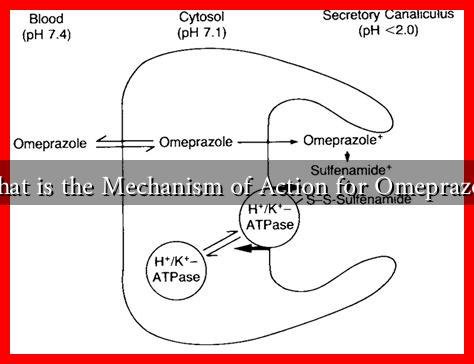-
Table of Contents
What is the Mechanism of Action for Omeprazole?
Omeprazole is a widely used medication that belongs to a class of drugs known as proton pump inhibitors (PPIs). It is primarily prescribed for conditions related to excessive stomach acid production, such as gastroesophageal reflux disease (GERD), peptic ulcers, and Zollinger-Ellison syndrome. Understanding the mechanism of action of omeprazole is crucial for both healthcare professionals and patients to appreciate how this medication works and its implications for treatment.
Understanding Proton Pump Inhibitors
Before delving into the specific mechanism of action of omeprazole, it is essential to understand what proton pump inhibitors are and how they function in general.
- Proton Pump Inhibitors (PPIs): These medications reduce stomach acid production by blocking the proton pump in the stomach lining.
- Proton Pump: The proton pump, also known as H+/K+ ATPase, is an enzyme found in the parietal cells of the gastric mucosa. It is responsible for the final step in the production of gastric acid.
- Common PPIs: Besides omeprazole, other PPIs include lansoprazole, esomeprazole, and pantoprazole.
Mechanism of Action of Omeprazole
Omeprazole’s mechanism of action is both unique and effective, making it a cornerstone in the treatment of acid-related disorders. Here’s how it works:
- Activation: Omeprazole is a prodrug, meaning it is inactive until it is metabolized in the acidic environment of the stomach. Once ingested, it is absorbed in the small intestine and travels to the parietal cells of the stomach.
- Binding to the Proton Pump: In the parietal cells, omeprazole is converted into its active form, which then binds covalently to the H+/K+ ATPase enzyme. This binding inhibits the enzyme’s activity, effectively blocking the secretion of hydrogen ions into the gastric lumen.
- Reduction of Gastric Acid Secretion: By inhibiting the proton pump, omeprazole significantly reduces gastric acid secretion, leading to increased gastric pH. This reduction helps alleviate symptoms associated with acid-related conditions.
Clinical Implications and Efficacy
The clinical implications of omeprazole’s mechanism of action are profound. Studies have shown that omeprazole can effectively heal erosive esophagitis and provide relief from GERD symptoms. For instance:
- A study published in the American Journal of Gastroenterology found that omeprazole was effective in healing erosive esophagitis in 80% of patients within eight weeks.
- Another clinical trial demonstrated that omeprazole significantly reduced the frequency of heartburn episodes in patients with GERD compared to placebo.
Potential Side Effects and Considerations
While omeprazole is generally well-tolerated, it is essential to be aware of potential side effects and long-term considerations:
- Common Side Effects: These may include headache, nausea, diarrhea, and abdominal pain.
- Long-term Use Risks: Prolonged use of PPIs like omeprazole has been associated with risks such as vitamin B12 deficiency, kidney disease, and increased risk of gastrointestinal infections.
Conclusion
In summary, omeprazole is a powerful proton pump inhibitor that works by irreversibly binding to the H+/K+ ATPase enzyme in the stomach, leading to a significant reduction in gastric acid secretion. Its efficacy in treating acid-related disorders has made it a staple in gastroenterology. However, it is crucial for both patients and healthcare providers to be aware of the potential side effects and long-term implications of its use. As with any medication, a balanced approach considering both benefits and risks is essential for optimal patient care.

